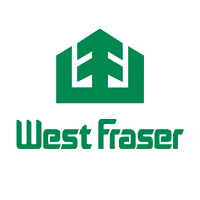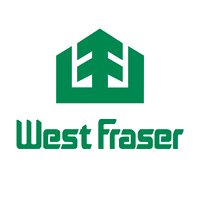
West Fraser Timber Co Ltd
TSX:WFG


| US |

|
Johnson & Johnson
NYSE:JNJ
|
Pharmaceuticals
|
| US |

|
Berkshire Hathaway Inc
NYSE:BRK.A
|
Financial Services
|
| US |

|
Bank of America Corp
NYSE:BAC
|
Banking
|
| US |

|
Mastercard Inc
NYSE:MA
|
Technology
|
| US |

|
UnitedHealth Group Inc
NYSE:UNH
|
Health Care
|
| US |

|
Exxon Mobil Corp
NYSE:XOM
|
Energy
|
| US |

|
Pfizer Inc
NYSE:PFE
|
Pharmaceuticals
|
| US |

|
Palantir Technologies Inc
NYSE:PLTR
|
Technology
|
| US |

|
Nike Inc
NYSE:NKE
|
Textiles, Apparel & Luxury Goods
|
| US |

|
Visa Inc
NYSE:V
|
Technology
|
| CN |

|
Alibaba Group Holding Ltd
NYSE:BABA
|
Retail
|
| US |

|
JPMorgan Chase & Co
NYSE:JPM
|
Banking
|
| US |

|
Coca-Cola Co
NYSE:KO
|
Beverages
|
| US |

|
Walmart Inc
NYSE:WMT
|
Retail
|
| US |

|
Verizon Communications Inc
NYSE:VZ
|
Telecommunication
|
| US |

|
Chevron Corp
NYSE:CVX
|
Energy
|
Utilize notes to systematically review your investment decisions. By reflecting on past outcomes, you can discern effective strategies and identify those that underperformed. This continuous feedback loop enables you to adapt and refine your approach, optimizing for future success.
Each note serves as a learning point, offering insights into your decision-making processes. Over time, you'll accumulate a personalized database of knowledge, enhancing your ability to make informed decisions quickly and effectively.
With a comprehensive record of your investment history at your fingertips, you can compare current opportunities against past experiences. This not only bolsters your confidence but also ensures that each decision is grounded in a well-documented rationale.
Do you really want to delete this note?
This action cannot be undone.

| 52 Week Range |
81.34
132.37
|
| Price Target |
|
We'll email you a reminder when the closing price reaches CAD.
Choose the stock you wish to monitor with a price alert.

|
Johnson & Johnson
NYSE:JNJ
|
US |

|
Berkshire Hathaway Inc
NYSE:BRK.A
|
US |

|
Bank of America Corp
NYSE:BAC
|
US |

|
Mastercard Inc
NYSE:MA
|
US |

|
UnitedHealth Group Inc
NYSE:UNH
|
US |

|
Exxon Mobil Corp
NYSE:XOM
|
US |

|
Pfizer Inc
NYSE:PFE
|
US |

|
Palantir Technologies Inc
NYSE:PLTR
|
US |

|
Nike Inc
NYSE:NKE
|
US |

|
Visa Inc
NYSE:V
|
US |

|
Alibaba Group Holding Ltd
NYSE:BABA
|
CN |

|
JPMorgan Chase & Co
NYSE:JPM
|
US |

|
Coca-Cola Co
NYSE:KO
|
US |

|
Walmart Inc
NYSE:WMT
|
US |

|
Verizon Communications Inc
NYSE:VZ
|
US |

|
Chevron Corp
NYSE:CVX
|
US |
This alert will be permanently deleted.
West Fraser Timber Co Ltd
Amidst the vast, untamed forests of North America, West Fraser Timber Co. Ltd. has carved a path as a quiet giant in the global wood products industry. Headquartered in Vancouver, this Canadian company harnesses the natural abundance of timber from its expansive forestry operations. West Fraser isn’t merely a steward of these forests; it actively engages in their sustainable management, balancing the delicate interplay between economic growth and ecological responsibility. This strategic approach ensures a consistent and high-quality supply of timber, enabling the company to maintain a dominant position in the cyclical world of lumber markets. As global economic conditions influence demand for wood-based products, West Fraser's vertically integrated operations—from logging through to sawmilling—position it uniquely to optimize production efficiency and cost management.
The company's business model extends beyond just timber, as it delves deep into value-added products, ensuring a diverse revenue stream. This diversification is manifested in its production of wood-based panels, pulp, and newsprint, as well as engineered wood products that find their way into construction sites across continents. These engineered products, known for their strength and efficiency, cater to the rising demand for more resilient and sustainable building materials. By capitalizing on economies of scale and technological advancements, West Fraser maximizes its output, transforming raw wood into essential products that underpin residential, commercial, and industrial infrastructure. This expansive portfolio not only provides resilience against market volatilities but also secures West Fraser's enduring role as a linchpin in the timber industry.

Amidst the vast, untamed forests of North America, West Fraser Timber Co. Ltd. has carved a path as a quiet giant in the global wood products industry. Headquartered in Vancouver, this Canadian company harnesses the natural abundance of timber from its expansive forestry operations. West Fraser isn’t merely a steward of these forests; it actively engages in their sustainable management, balancing the delicate interplay between economic growth and ecological responsibility. This strategic approach ensures a consistent and high-quality supply of timber, enabling the company to maintain a dominant position in the cyclical world of lumber markets. As global economic conditions influence demand for wood-based products, West Fraser's vertically integrated operations—from logging through to sawmilling—position it uniquely to optimize production efficiency and cost management.
The company's business model extends beyond just timber, as it delves deep into value-added products, ensuring a diverse revenue stream. This diversification is manifested in its production of wood-based panels, pulp, and newsprint, as well as engineered wood products that find their way into construction sites across continents. These engineered products, known for their strength and efficiency, cater to the rising demand for more resilient and sustainable building materials. By capitalizing on economies of scale and technological advancements, West Fraser maximizes its output, transforming raw wood into essential products that underpin residential, commercial, and industrial infrastructure. This expansive portfolio not only provides resilience against market volatilities but also secures West Fraser's enduring role as a linchpin in the timber industry.
EBITDA Loss: West Fraser reported negative $144 million adjusted EBITDA for Q3 2025, pressured by weak markets and a $67 million duty expense.
Lower Prices: Lumber and OSB prices declined sharply, driving sequential drops in profitability across core segments.
Guidance Narrowed: Management reduced the top end of 2025 shipment guidance for both SPF and SYP lumber due to persistent demand softness.
Strong Balance Sheet: The company ended the quarter with $1.6 billion in available liquidity and $212 million net cash, supporting flexibility in a tough cycle.
Cost Actions: Significant capacity cuts and asset sales over the past three years aimed to strengthen the business for both down cycles and future recoveries.
New Tariffs: U.S. imposed a new 10% Section 232 tariff on top of existing lumber duties, further weighing on Canadian competitiveness.






































